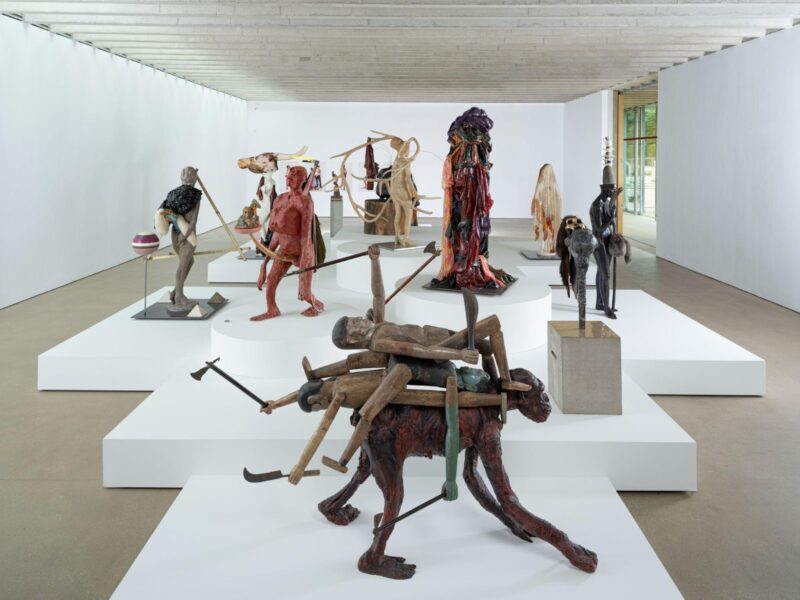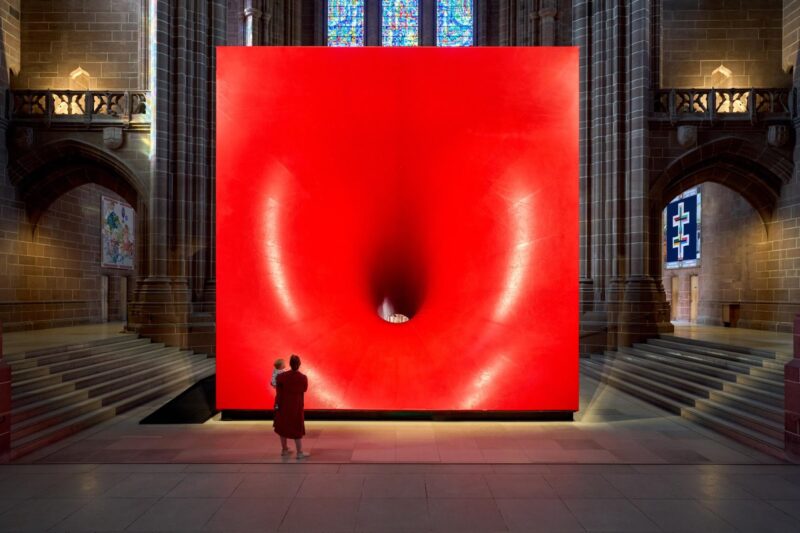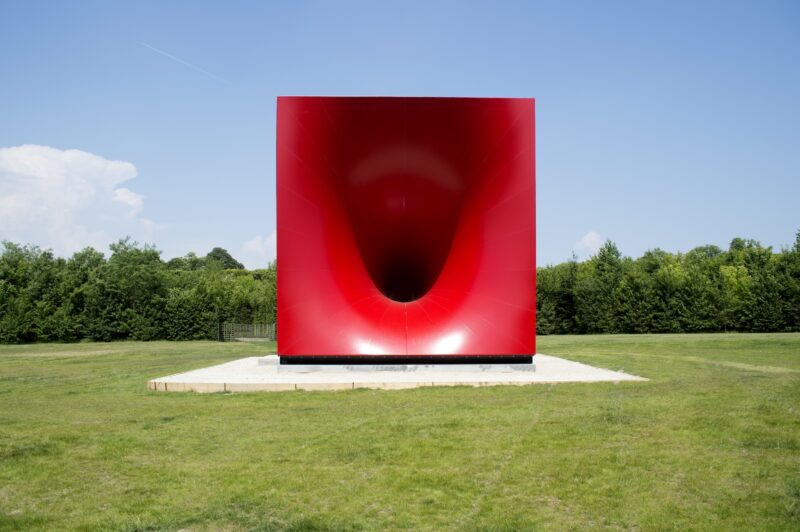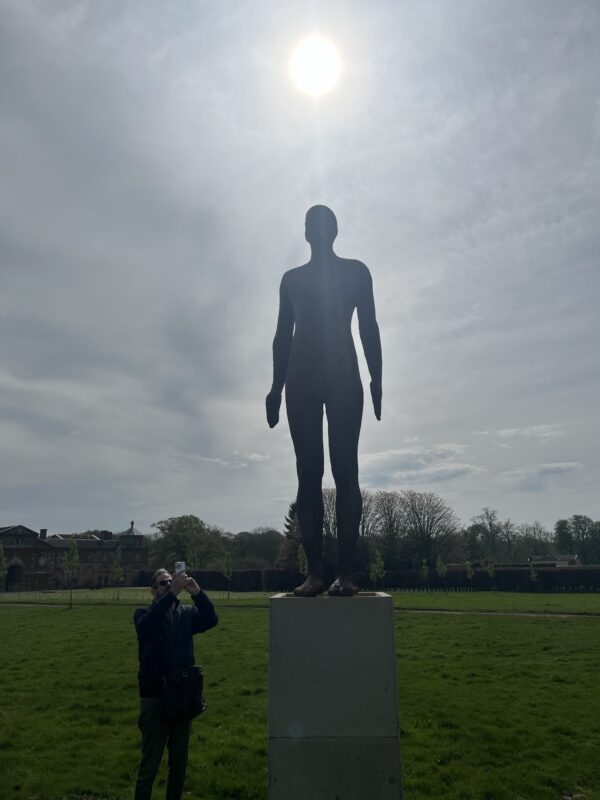Anish Kapoor’s latest exhibition is the perfect post-lockdown tonic for the soul after months of confinement. In March when the world was blind-sided by Covid-19, galleries and museums were forced to close and move online, so their gradual reopening this summer along with alternative exhibition venues such as the magnificent Houghton Hall, is a breath of fresh air for art lovers.
Curated by Mario Codognato, the Houghton Hall show was due to open in March and put on hold during lockdown. Anish Kapoor is one of the most prolific and reputed contemporary sculptors, known for utilising ambitious engineering to create mind-bending public sculptures such as the notorious and controversial 2012 ArcelorMittal Orbit (more commonly known as the Helter Skelter) commissioned for the Olympic Park and created with engineer Cecil Balmond. Royal Academician Kapoor won the Turner prize in 1991 and represented Great Britain at Venice Biennale. Born in Mumbai in 1954, he became part of the British establishment upon receiving his Knighthood for services to the arts in 2013.
Billed as Anish Kapoor’s largest UK exhibition of outdoor sculptures to date, the Houghton Hall show features 21 sculptures and mirror works from the past 4 decades, installed in the extensive grounds and Stone Hall of the house, as well as working drawings in the North Wing Colonnade.
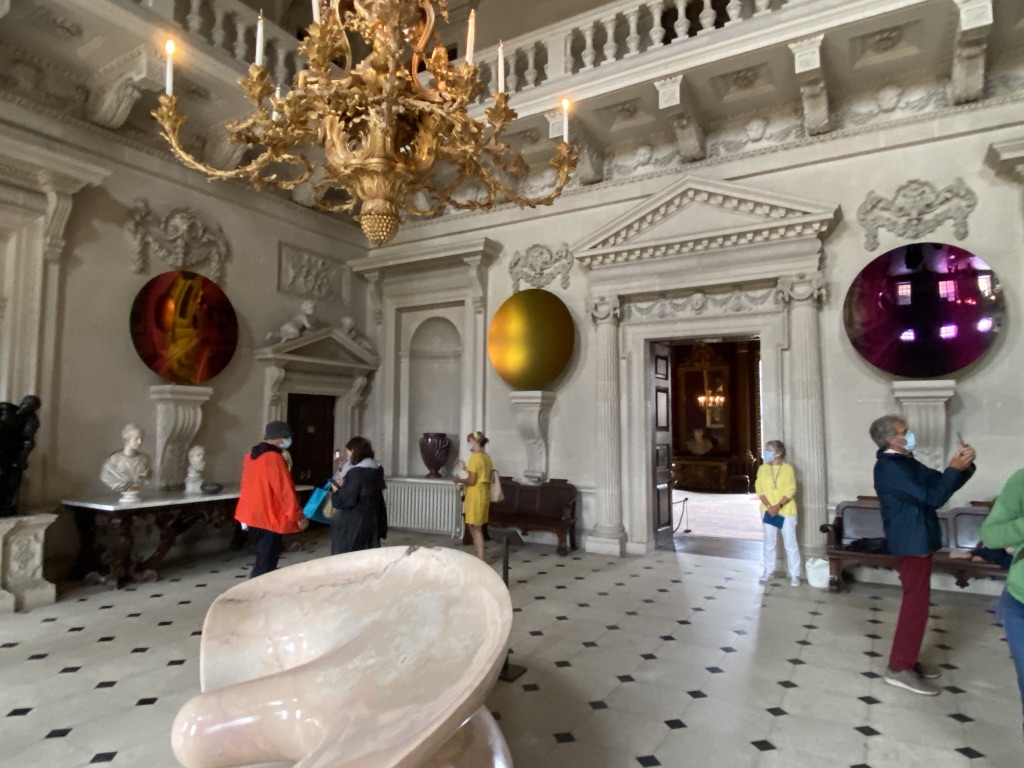
Anish Kapoor at Houghton Hall / Photo by Sky Sharrock
Kapoor’s visceral sculptures invite visitors to interact and reflect, in particular his vast Sky Mirror (2018), surely the pièce de résistance of the Houghton Hall exhibition. Sky Mirror is a 5-metre diameter mirrored disc of stainless steel situated on the sweeping vista of lawn that runs away from the Palladian stately home, crowned by the infinite sky and positioned within the seemingly endless 1,000 acres of land.
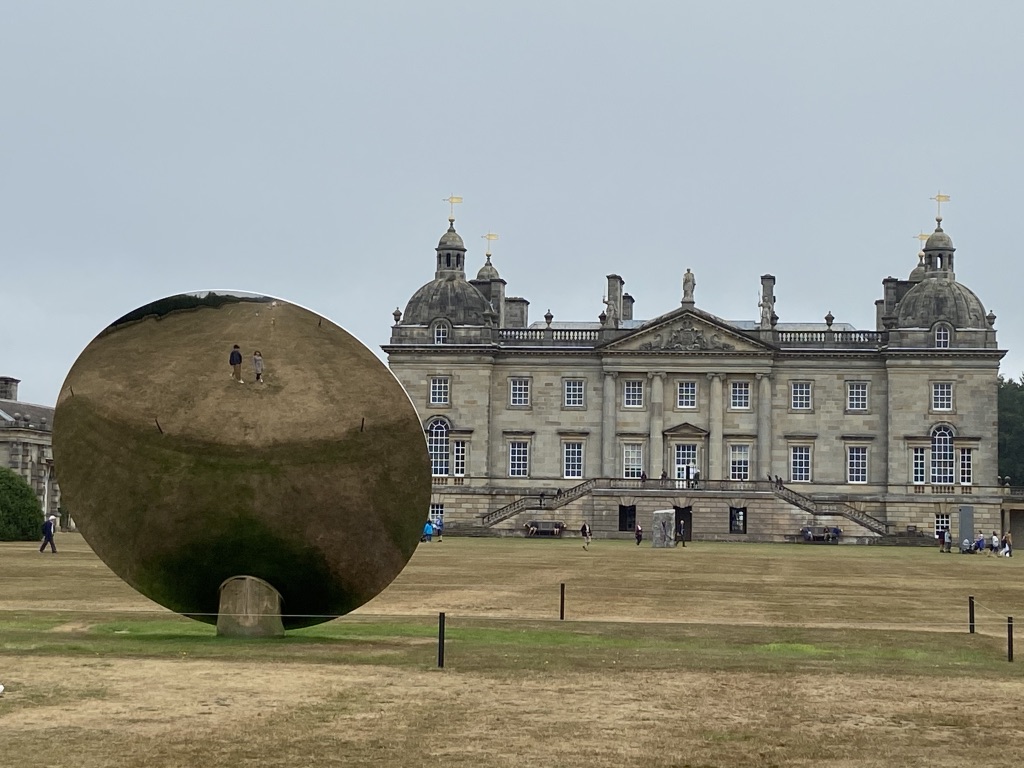
Anish Kapoor at Houghton Hall / Photo by Sky Sharrock
Standing in front of the mirror offers an existential experience mirroring the recent months of stillness imposed upon us by lockdown, and the resulting period of introspection and questions about the meaning of life that emerge when a new pandemic forces humanity to confront its own mortality. Sky Mirror’s full potential is reached on a sunny day, however, we visited on a cloudy day so it reflected grey skies and a few birds in the far distance. Although whatever the weather, the piece turns the artist into a magician by making people part of an optical illusion, similar to how visitors to Tate Modern in 2003 interacted with Olafur Eliasson’s artificial sun installation The Weather Project.

Anish Kapoor at Houghton Hall / Photo by Sky Sharrock
Curator Mario Codognato says of Sky Mirror:
Its surface reflects the ever-changing environment, the movement of the clouds, the brightness of the stars, the flocks of birds, the nothingness and the infinite: all of this and none of this. An oracle of light and ether, its materiality is dispersed into the boundlessness of the heavens.
Also installed within the grounds are several smooth marble sculptures (Mollis (2003), Sophia (2003) and Grace (2004). The highly polished nature of marble lends these sculptures a corporal sensuality, with one sculpture featuring a hole in the centre, evoking a vulva-like tunnel pointing to the birth of all humanity like a sculptural version of Courbet’s 1866 painting L’Origine du Monde (The Origin of the World).
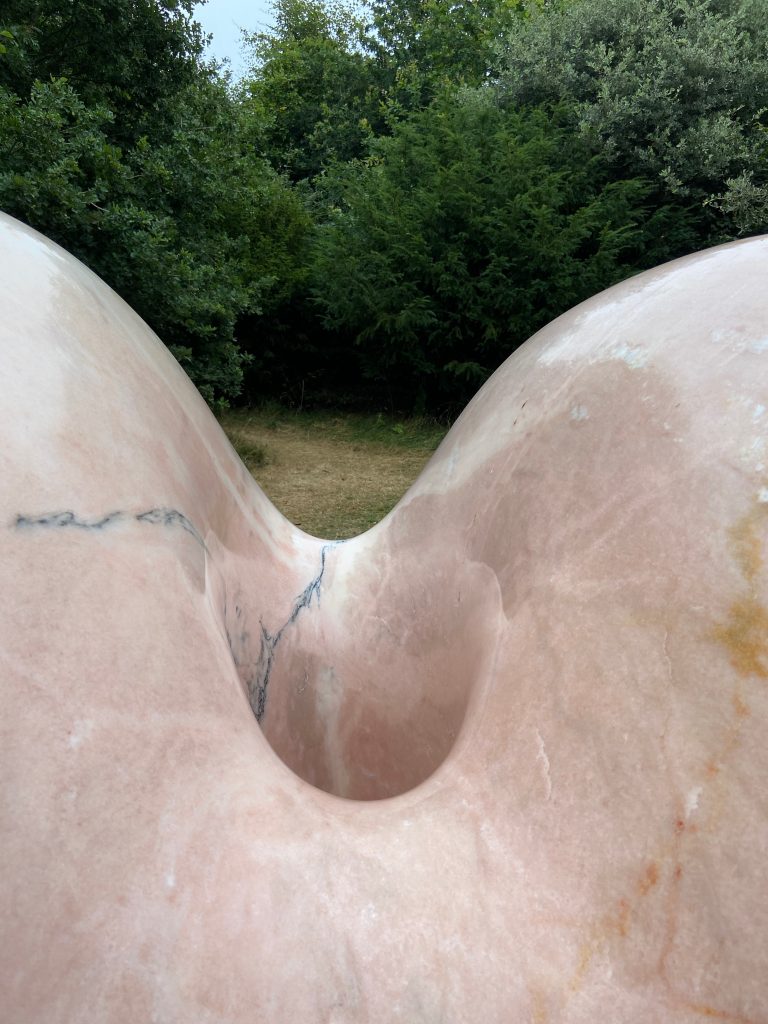
Anish Kapoor at Houghton Hall / Photo by Sky Sharrock
Positioned just in front of the house, in a play on the symmetrical design of its classical façade, is Rectangle within a Rectangle (2018), an upstanding rectangle of sculpted granite, with a rough exterior and highly polished rectangular-shaped hole within, which offers a view of Sky Mirror towards the horizon.
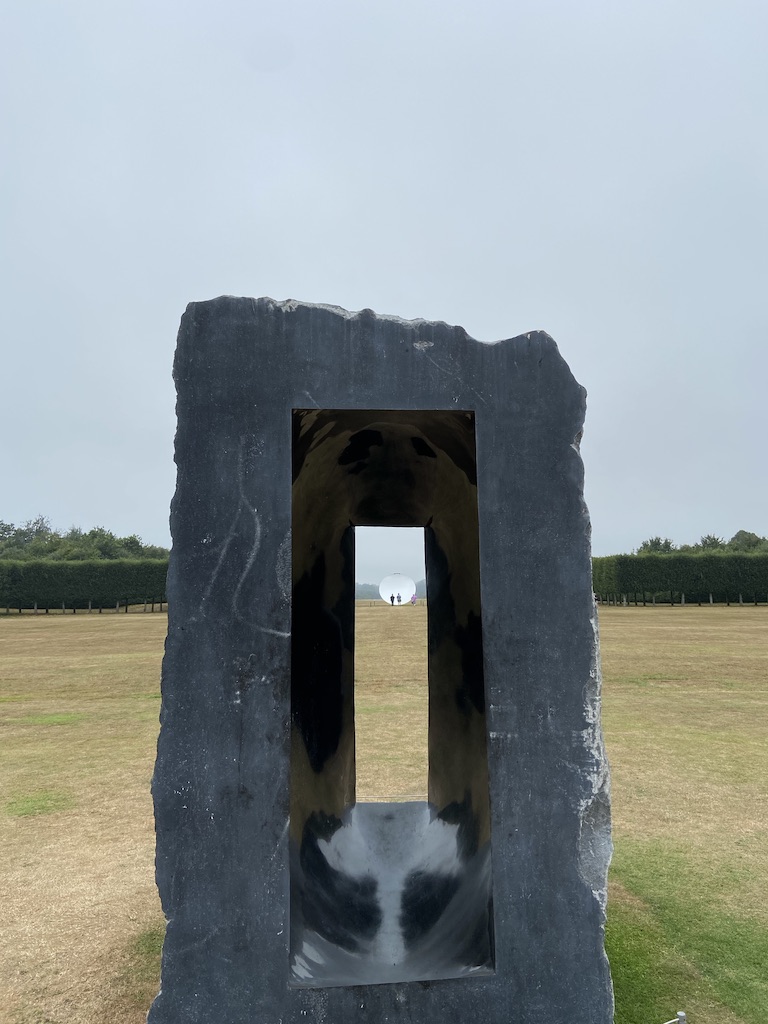
Anish Kapoor at Houghton Hall. Photo by Sky Sharrock
Anish Kapoor commented:
The whole of the tradition of sculpture concentrates on positive form. The negative in sculpture has relied on a symbolic relationship with the positive. I have been working to try and leave behind form and deal with non-form.
In The Stone Hall of the house are several jewel-coloured Mirror Works (2018-19), each one creating a playful dialogue with the interior of the classical stately home, subverting the lavish furnishings and playing mind games with visitors who peer into the shiny discs. More optical illusions can be found in the South Wing Gallery, where delicate working drawings are exhibited including Not Eve (1989), a sculptural sandstone and pigment drawing which invites the viewer into an infinite abyss.
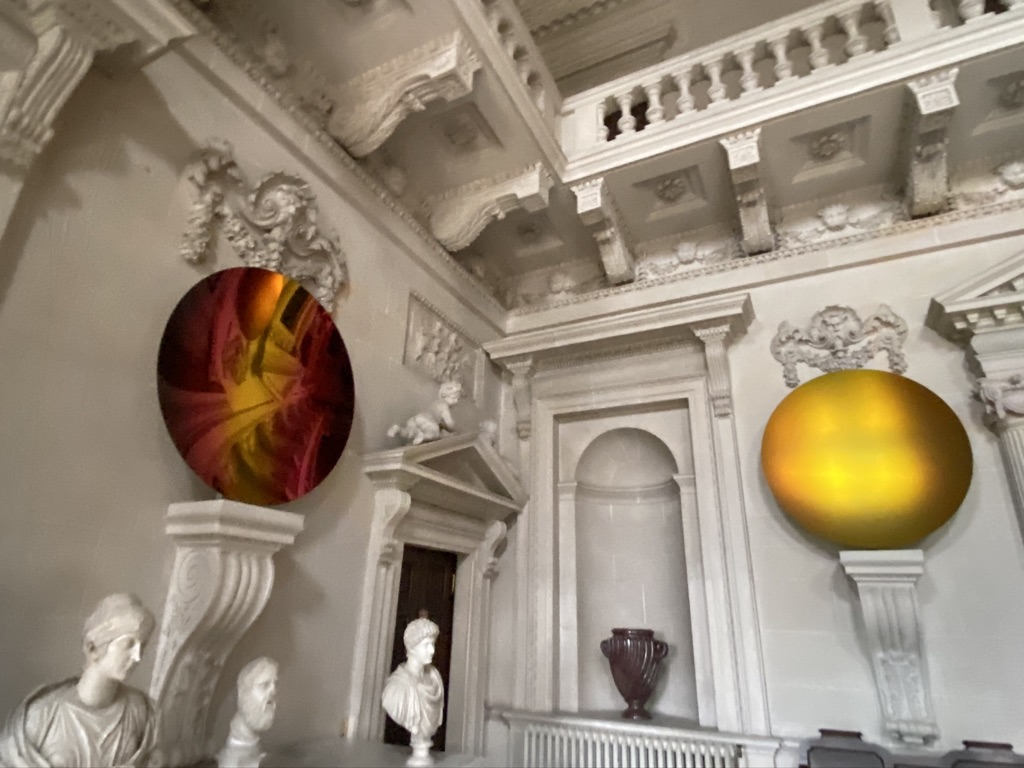
Houghton Hall was built in 1722 by Great Britain’s first Prime Minister Sir Robert Walpole and designed by prominent Georgian architects Colen Campbell and James Gibbs. During the eighteenth century, Walpole created one of the greatest collections of European art in Britain during the 18th century. Houghton passed to the Cholmondeley family at the end of the 18th Century, and Marquess and Marchioness of Cholmondeley opened the grounds and part of the house to the public in 1976. Visited by members of the Royal Family and Winston Churchill, whose photos adorn the grand piano in the stateroom, this is a fitting venue for an exhibition by a Knight of the British realm (Kapoor was knighted in for his services to the arts). With this exhibition, Kapoor follows in the footsteps of James Turrell (2015), Richard Long (2017), Damien Hirst (2018) and Henry Moore (2019).
Lord Cholmondeley says of Kapoor: Anish Kapoor is a magician. His elegant reflective pieces throw back the world in mysterious ways.
In recent years Lord Cholmondeley has built up an impressive collection of contemporary sculpture which is displayed in the grounds at Houghton, since commissioning James Turrell to create Skyspace in 2000, he has invited Richard Long, Anya Gallaccio, Stephen Cox, Jeppe Hein, Rachel Whiteread and Phillip King to create site-specific works.

Richard Long at Houghton Hall / Photo by Sky Sharrock
Anish Kapoor at Houghton is a perfect post-lockdown day out, Houghton Hall and its staff have adapted well to Covid-19 restrictions, with all gallery guides and staff wearing face masks, and visitors required to do so in the interior parts of the exhibition as well as in the gift shop and café. It’s a great family day as the ticket price gives you entry to the walled gardens, as well as allowing you to walk around the extensive grounds and see the permanent outdoor sculpture and installations (such as James Turrell’s Skyscape, Richard Long’s Full Moon Circle and Henry Moore’s Mother and Child. Children go for free, and despite feigning disinterest in the exhibition, I spied my 8-year-old daughter deep in conversation with one of the helpful gallery guides inside the Stone Hall, eager to find out more about the creation of the mirrored discs exhibited within. However, the ticket price of £16 per adult means that this risks becoming an elitist exhibition because of the high entrance cost, and although the food in the café is delicious, the lack of recycling bins anywhere contributes to a throwaway culture that the world was gradually putting a stop to pre-lockdown. Apart from that, the exhibition is a must.
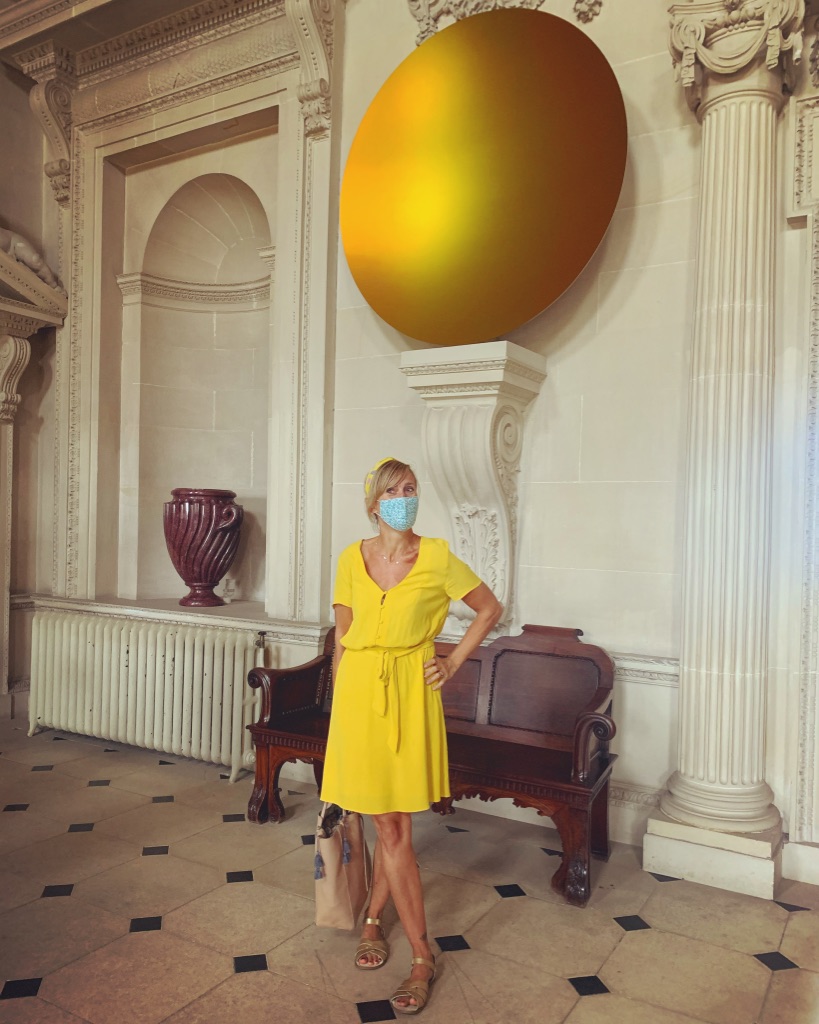

photos by Sky Sharrock
Anish Kapoor at Houghton Hall runs until 1st November: houghtonhall.com
